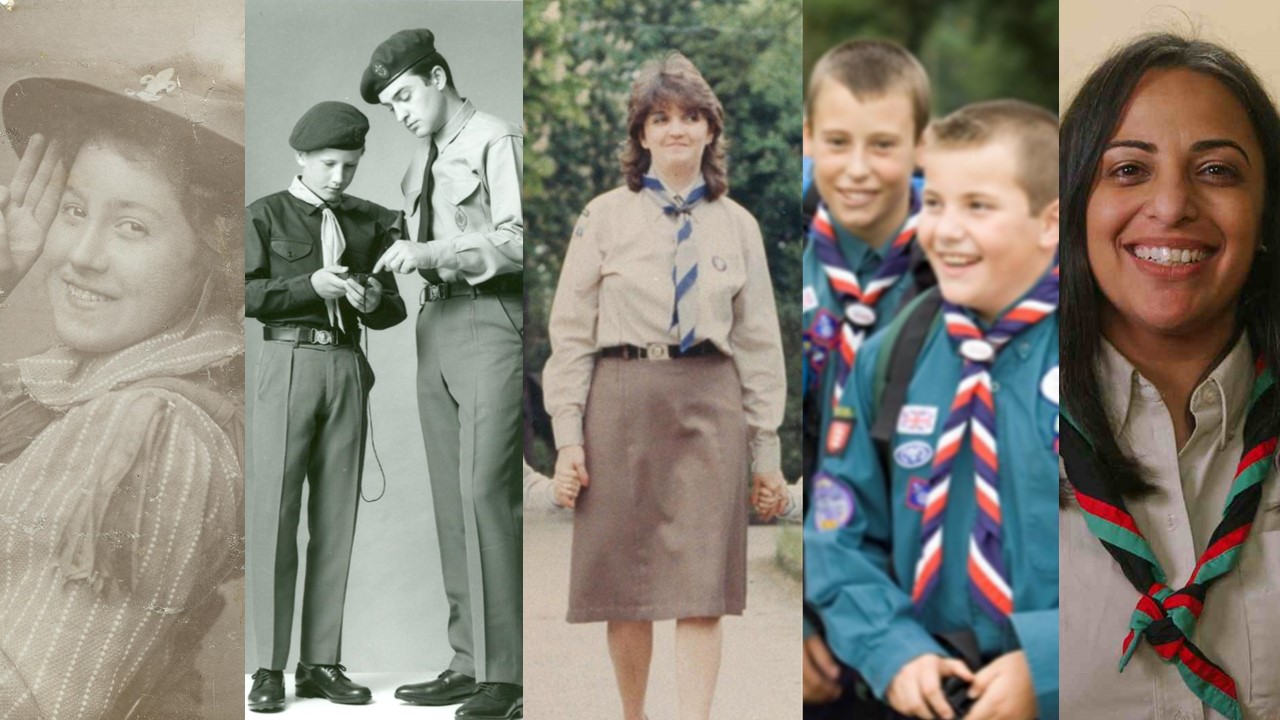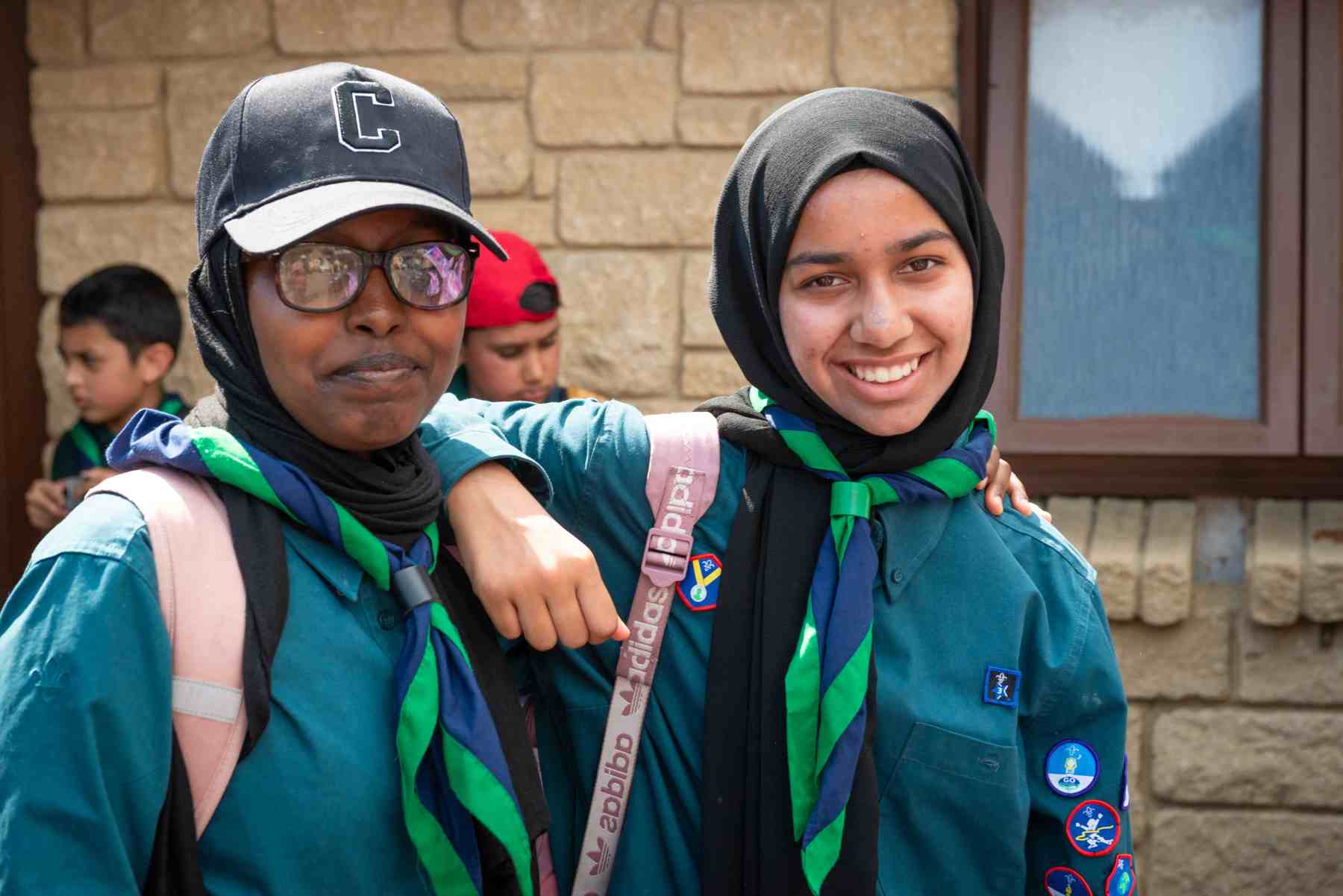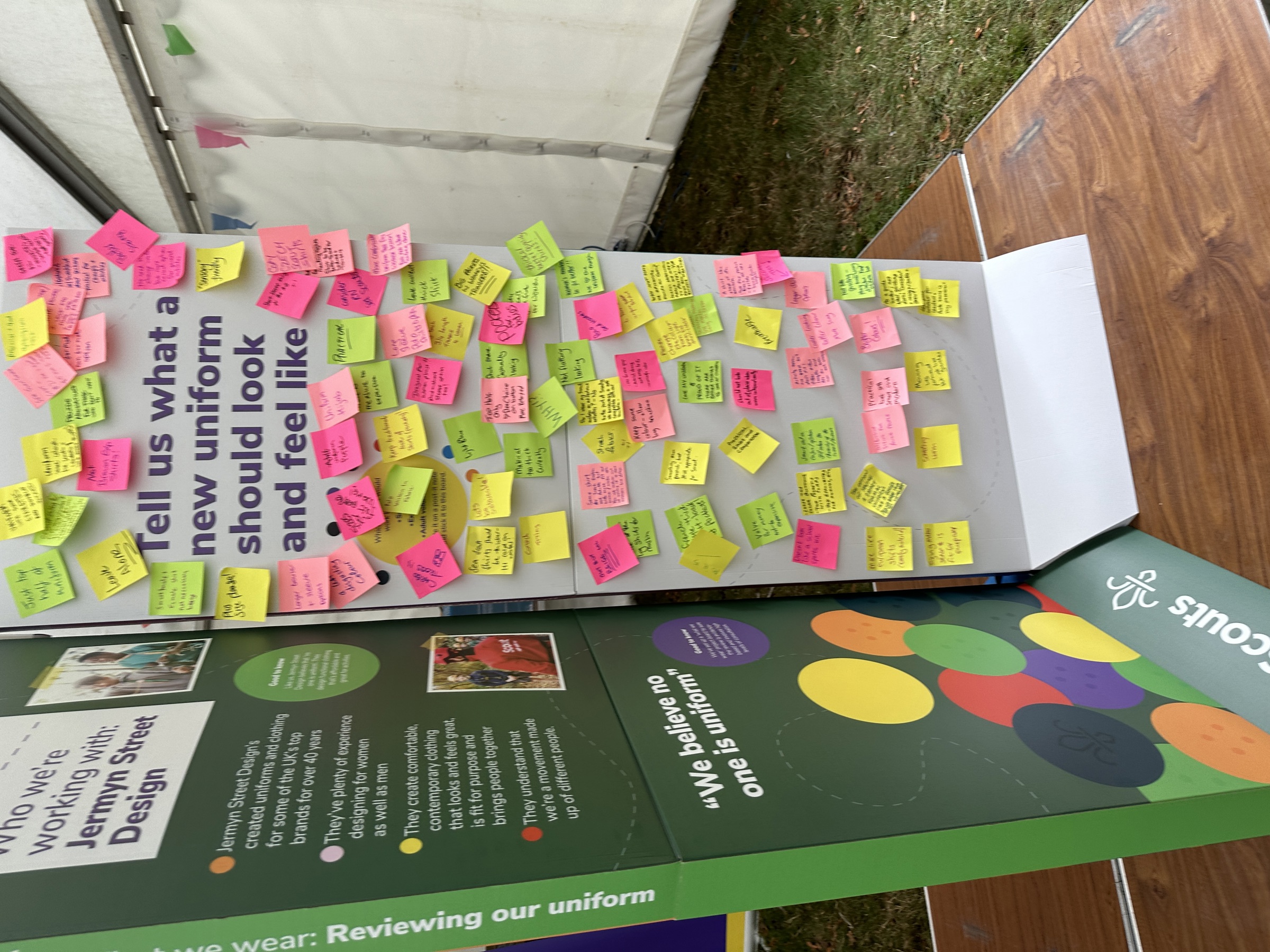Looking at what we wear
After listening to research from thousands of young people and adults inside and out of Scouts, we’re now exploring how we can update what we wear, including our uniform, for Scouts age and above (10.5+) and adult volunteers.
Our uniform unites us
We’ve had a uniform from as far back as 1908. Just like our promise and values, it unites us as a movement. It's practical, brings us together and creates a sense of pride. It also promotes equality across faiths, gender and backgrounds.

Why we need to change
Our research with over 26,000 young people and adults in and out of Scouts 2019-2020 and in 2022 told us we needed a change. While recognisable, the current uniform is seen as old fashioned. A worrying 42% of 13-17 year olds have told us that it would put them off joining Scouts. As we continue to try to grow Scouts and support even more young people, we need to keep the best of our heritage, such as our neckerchief, while sensibly reimagining it for the world today. Our uniform needs to feel as contemporary and relevant as our brand and our movement itself.
Within the movement, we heard that changes were needed too. Both volunteers and young people told us our uniform needed to be more comfortable and practical. It needed to fit better for girls and women, and it needs to be sustainable over the clothing's whole life cycle.
Our focus
Some uniforms will stay the same. Young people and adults told us they liked Squirrels, Beavers and Cubs uniforms and found them practical. So we’re leaving these unchanged.
What we’ll be looking into is the core uniform and informal practical clothes for outdoor and indoor meetings and activities for young people aged 10½ upwards and for adult volunteers.
From what Scouts told us, we’ve created a brief for our designer to focus on:
- Affordability: making sure the uniform is cost effective and value for money.
- Simplicity: simple designs to suit a wide variety of wearer shapes and sizes. Practical solutions for wearers with additional needs.
- Durability: materials that last and are practical for activities at Scouts.
- Sustainability: working with materials, suppliers and manufacturers who have sustainable standards, that make a positive contribution towards climate change
- Ethical assurance: keeping to anti-slavery and other employment laws.

The plan
- We’ve set up a ‘what we wear’ board. It will make sure that our process is evidence-based and involves high levels of consultation before we move forward with plans.
- We’ve commissioned a design partner, Jermyn Street Design, with a brief to help us create something that feels right for Scouts.
- Throughout 2024 and 2025, we’ll be developing the designs in consultation with many more young people and adults across different communities, both in and out of Scouting.
- We'll then move forward with approving designs.
- Later, we'll share the designs with the whole movement
- And beyond this, we’ll launch the sale of the new uniforms.
Good to know
- Squirrels, Beavers, Cubs uniforms will not be changing
- There are no immediate changes to uniform – the new designs will not be shared until at least 2024 with launch beyond that date.
- There will be a long transition time to move from the current to the new uniform to help families and volunteers.
Key points
Scouts is a movement, which means we change with the times while never forgetting where we came from. What we wear in Scouts has evolved across the decade to meet changes, needs and fashions, while always remaining recognisable and fit for purpose.
As a youth movement it’s vital that young people get to shape what they wear. Young people are playing a full part in the consultation, design selection and testing of the clothing. The project sponsor leading our What We Wear project board, Ella MacLeod, is an Explorer leader who brings direct understanding of what young people want from what they wear. She has assembled a diverse team full of experience and expertise on clothing, brand and hands-on experience of Scouts across the UK.
We understand that family budgets are tight. That’s why we’re keeping value for money and affordability front of mind to keep Scouts clothing accessible to all. But this doesn’t mean we should accept poor quality or cheap fabrics. We need to balance this with durability and making sure the clothing is produced in a sustainable way. We’re fully committed to making the clothing excellent value for money.
Keep up to date with plans
We’ll keep this page regularly updated and share key information in our members’ email. You can also receive email updates to hear about opportunities to get involved by joining our What We Wear Community of Interest. We'd love to get feedback from a wide variety of people in Scouting so please share around.
Sign up todayGot a question about What We Wear?
Let us know at support@scouts.org.uk and please put ‘What We Wear’ in the subject line. We’ll get back to you as quickly as possible.
Join our What We Wear Community of Interest
Receive email updates every six weeks to hear about opportunities to get involved.
Sign up todayJermyn Street Design is a company that designs and manufactures uniforms and clothing for some of the UK’s top brands. They have been delivering custom workwear clothing for over 40 years, and have experience designing for women in traditionally male environments. While they create comfortable, contemporary clothing that looks and feels great, is fit for purpose and brings people together, they understand that we’re a movement made up of different people. Like us, they believe that ‘no one is uniform’ and design functional clothing that is both affordable and great for doing different activities
